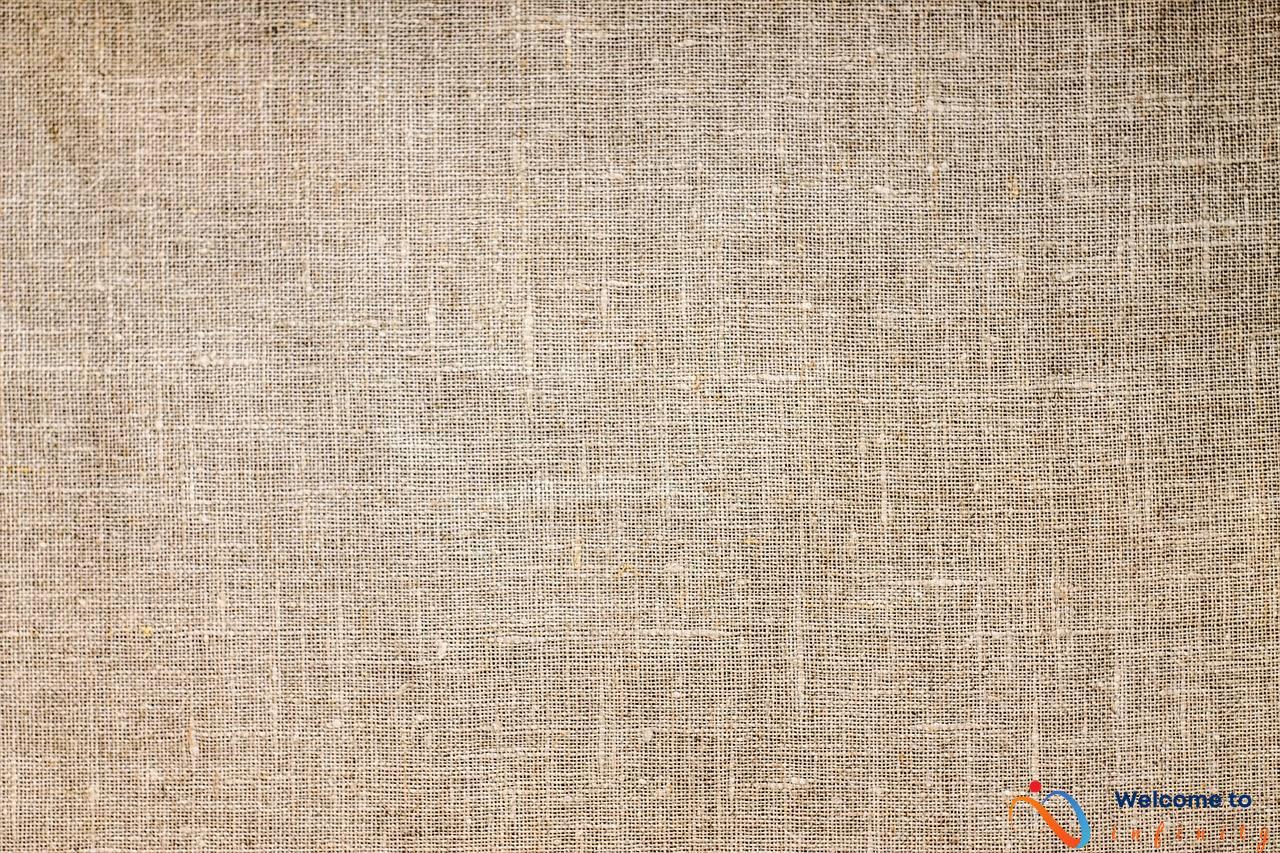Sunscreen is a vital component of any skincare routine, especially in protecting the skin from the sun's harmful rays. However, some people avoid using sunscreen due to the belief that it can cause acne breakouts. This popular belief has fueled many skincare debates, and it's essential to determine whether this is a myth or a fact.
It's important to recognize that acne is a multifactorial condition that's caused by different factors ranging from bacteria, genetics, lifestyle choices, to environmental factors. While skincare products such as sunscreen can impact acne formation, it's not the sole cause. Understanding how sunscreen works and its effects on the skin is crucial in debunking the acne myth.
Sunscreen works by absorbing or reflecting the sun's UV rays, which can be detrimental to the skin. When UV radiation penetrates the skin, it can cause sunburn, skin aging, and even increase the risk of skin cancer. That's why it's essential to use sunscreen daily, regardless of your skin type or age.
In conclusion, sunscreen does not cause acne. While it can contribute to breakouts indirectly, the benefits of using sunscreen outweigh the potential risks. Therefore, it's essential to select a sunscreen that is suitable for your skin type and to consult with a dermatologist to determine what products work best for you.
The basics of sunscreen
Before we dive into the connection between sunscreen and acne, it's important to understand how sunscreen works to protect the skin from harmful UV radiation. Sunscreens use a combination of organic and inorganic compounds to absorb or reflect UV rays. The main types of UV radiation that sunscreens protect against are UVA and UVB.
UVA rays account for about 95% of the UV radiation that reaches the earth's surface and can penetrate deep into the skin, causing premature aging, wrinkles, and skin cancer. UVB rays, on the other hand, are more intense and can cause sunburn and skin cancer. Most sunscreens offer protection against both UVA and UVB rays.
The sun protection factor (SPF) of a sunscreen is a measure of the time it takes for UVB rays to penetrate the skin when wearing sunscreen compared to when not wearing any sunscreen. For example, if it takes 10 minutes for UVB rays to cause sunburn without any sunscreen, a sunscreen with an SPF of 30 should theoretically prevent sunburn for 300 minutes (10 x 30).
In addition to using sunscreen, it's important to cover up with protective clothing and hats, seek shade during peak hours of sunlight, and avoid tanning beds to reduce the risk of skin damage and skin cancer.
Types of sunscreen
Sunscreen is a vital tool for protecting our skin from harmful UV radiation. But with so many options available, how do you know which one is right for you? Let's explore the different types of sunscreen and their varying levels of protection against UV radiation.
There are two main types of sunscreen: chemical and physical. Chemical sunscreens contain chemicals that absorb UV radiation and convert it into heat, preventing it from penetrating the skin. Physical sunscreens, on the other hand, contain minerals like zinc oxide and titanium dioxide, which reflect and scatter UV radiation to prevent it from penetrating the skin.
Chemical sunscreens have been the go-to option for many people since they are easy to apply and absorb quickly into the skin. However, they are not suitable for everyone, especially those with sensitive skin since they can cause irritation that can lead to breakouts.
If you have sensitive skin, physical sunscreens are a better option for you since they are non-irritating and do not clog pores. They are also suitable for people with skin conditions such as rosacea or eczema, making them a popular choice among dermatologists.
When choosing a sunscreen, it's essential to consider its SPF level and whether it provides broad-spectrum protection, meaning it protects against both UVA and UVB radiation. Additionally, look for products labeled as non-comedogenic since they are less likely to clog pores and cause breakouts.
In conclusion, understanding the different types of sunscreen and their varying levels of protection can help you make an informed decision when choosing a sunscreen that suits your skin type. Whether you opt for a chemical or physical sunscreen, always ensure that it is non-irritating and provides broad-spectrum protection against UV radiation.
Chemical sunscreens
Chemical sunscreens are a common type of sunscreen that work by absorbing UV radiation and converting it into heat, which prevents it from penetrating the skin. They contain a variety of chemicals such as avobenzone, octinoxate, and octocrylene, among others.
While many people think of chemical sunscreens as being more effective than physical sunscreens, this is not necessarily true. The effectiveness of a sunscreen depends on the specific ingredients used and how they interact with your skin. Some people find chemical sunscreens to be irritating to their skin or find that they clog pores and contribute to acne.
It's important to note that while chemical sunscreens are effective in protecting against UV radiation, they do come with some risks. Some chemical ingredients have been linked to hormone disruption and reproductive toxicity. Additionally, oxybenzone, a common ingredient in chemical sunscreens, has been known to irritate sensitive skin and cause breakouts in some individuals.
If you choose to use a chemical sunscreen, look for options that are labeled non-comedogenic, which means they are less likely to clog pores and cause breakouts. Additionally, consider ease of application and reapplication, as some chemical sunscreens can feel heavy or greasy on the skin.
The issue with oxybenzone
Oxybenzone is a chemical UV filter that is used in many sunscreens to protect the skin from the sun's harmful rays. However, this ingredient has been found to irritate sensitive skin and can cause breakouts in some individuals. Studies have shown that oxybenzone can penetrate the skin and mimic the hormone estrogen in the body, leading to hormonal imbalances that can trigger acne in some individuals.
In addition to its potential acne-causing properties, oxybenzone has also been linked to other health concerns, including endocrine disruption and coral reef damage. For this reason, many people are now turning to oxybenzone-free sunscreens as a safer and more eco-friendly alternative.
If you have sensitive skin or are prone to breakouts, it's best to avoid sunscreens that contain oxybenzone. Instead, look for products that use alternative UV filters such as zinc oxide and titanium dioxide, which are less likely to cause irritation and do not have the same hormonal effects as oxybenzone. Additionally, opting for physical sunscreens rather than chemical ones can also help to minimize the risk of acne.
Other chemical sunscreen options
If you have sensitive skin and are looking for a chemical sunscreen that doesn't contain oxybenzone, there are plenty of options available. Look for sunscreens with ingredients like avobenzone, octocrylene, and homosalate, which are less likely to cause skin irritation and breakouts.
You can also look for sunscreens labeled “oil-free” or “non-greasy,” which will be less likely to clog pores. It's important to read the ingredient list carefully and avoid any products that contain fragrances or alcohol, as these can also irritate sensitive skin.
Another option to consider is a hybrid sunscreen, which combines both chemical and physical sunscreen ingredients. These products provide the benefits of both types of sunscreen and are often less irritating than chemical sunscreens alone.
If you're unsure which sunscreen is right for your skin type, consult a dermatologist for personalized recommendations. They can help you find a sunscreen that provides optimal protection without causing irritation or breakouts.
Physical sunscreens
Physical sunscreens are a popular alternative to chemical sunscreens for many reasons. They are less likely to cause irritation, making them a great option for people with sensitive skin. Due to their mineral-based ingredients, physical sunscreens reflect and scatter UV radiation, preventing it from penetrating the skin.
Zinc oxide and titanium dioxide are the two minerals commonly found in physical sunscreens. Zinc oxide is a natural ingredient that is known for its soothing properties, making it an excellent choice for people with sensitive or inflamed skin. Titanium dioxide is known for its high refractive index, which means it scatters light and offers excellent protection against UV radiation.
| Zinc oxide-based physical sunscreens | Titanium dioxide-based physical sunscreens |
|---|---|
| Provide broad-spectrum protection against UVA and UVB radiation | Also provides broad-spectrum protection against UVA and UVB radiation |
| Do not clog pores or cause breakouts | Do not cause allergic reactions or irritation |
| Can leave a white cast on the skin | May be easier to blend into the skin without leaving a white cast |
Physical sunscreens are an excellent choice for acne-prone skin since they do not clog pores or cause breakouts. They are also less likely to cause an allergic reaction or irritation, making them a great option for people with sensitive skin. However, it's essential to keep in mind that physical sunscreens can leave a white cast on the skin, which may not be suitable for everyone.
Are physical sunscreens better for acne-prone skin?
If you have acne-prone skin, you may be hesitant to use sunscreen for fear of worsening breakouts. However, physical sunscreens can actually be beneficial for your skin. Unlike chemical sunscreens that absorb UV radiation, physical sunscreens contain minerals like zinc oxide and titanium dioxide, which reflect and scatter UV radiation to prevent it from penetrating the skin, making them a better option for sensitive skin.
Physical sunscreens are considered non-irritating and do not clog pores, which means they are less likely to cause breakouts. They form a protective layer on the skin that shields it from sun damage without interfering with the skin's natural processes. They are also less likely to cause an allergic reaction, making them a great alternative for those with sensitive skin.
When choosing a physical sunscreen, look for one that contains at least 5% zinc oxide or titanium dioxide to ensure adequate protection from the sun. Products labeled “broad-spectrum” protect against both UVA and UVB rays, providing maximum protection from harmful radiation. Additionally, physical sunscreens are water-resistant, meaning they do not easily come off when exposed to water or sweat, making them perfect for outdoor activities.
Overall, physical sunscreens are a great option for those with acne-prone skin. They provide adequate sun protection without clogging pores or causing irritation, making them a suitable choice for daily use. Choose a broad-spectrum physical sunscreen with at least 5% zinc oxide or titanium dioxide, and you'll be on your way to healthy, protected skin.
The link between sunscreen and acne
Acne is a common skin condition that affects people of all ages. Among the many factors that can trigger acne, some people believe that sunscreen is a key culprit. The theory is that the oils and active ingredients in sunscreen block the pores on the skin, leading to the formation of pimples. While this may be true for some people, there are several other factors that need to be considered as well.
Firstly, not all sunscreens are created equal. Some sunscreens contain oils and other ingredients that can clog pores, contributing to acne formation. On the other hand, there are several non-comedogenic options available that do not contain pore-clogging ingredients. It is essential to choose a sunscreen that is labeled as non-comedogenic to minimize the risk of a breakout.
Another factor that can lead to the formation of acne after using sunscreen is an allergic reaction to one of the ingredients. Sunscreens contain a range of chemicals and minerals that can cause allergic reactions in some people. This can result in redness, itching, and breakouts. If you notice any unusual symptoms after using sunscreen, you may want to consider switching to a different brand or consulting a dermatologist.
Sweating and humidity can also contribute to the formation of acne, and since sunscreen is used in warm weather, it may be associated with breakouts indirectly. However, it's essential to keep in mind that the benefits of sunscreen are far greater than the potential risk of a breakout. Wearing sunscreen can protect your skin from harmful UV radiation, which can lead to sunburn, premature aging, and even skin cancer.
To summarize, while it is true that some sunscreens can cause acne in some individuals, it is important to remember that not all sunscreens are created equal. Choosing a non-comedogenic option, looking for physical sunscreen options, and consulting a dermatologist can help minimize the risk of a breakout. Don't let the fear of a breakout prevent you from protecting your skin from the sun's harmful rays.
Clogging of pores
One of the most convincing arguments against using sunscreen is the concern that it clogs pores and causes acne. While this can be true, not all sunscreen products are created equal, and some are less likely to cause breakouts than others. It all comes down to the type of sunscreen and ingredients used when formulating it.
Chemical sunscreens, containing ingredients like avobenzone, octinoxate, and oxybenzone, can penetrate the skin and interfere with the natural oil production, leading to clogged pores and breakouts. On the other hand, physical sunscreens that contain zinc oxide, titanium dioxide, or iron oxide are generally considered non-comedogenic and much less likely to cause acne.
Another option for those with acne-prone skin is to choose oil-free or lightweight sunscreens that do not contain heavy emollients and are less likely to clog pores. It's always a good idea to check the label and look for products that are marked “non-comedogenic” or “oil-free.”
If you're unsure which sunscreen option is best for you, consult a dermatologist for personalized recommendations on choosing the right sunscreen that will not clog your pores and cause acne.
Allergic reactions
One of the reasons people may experience breakouts after using sunscreen is due to an allergic reaction to one of the ingredients contained in the product. For some individuals, the immune system identifies particular ingredients, such as fragrances, preservatives, or emulsifiers used in the formulation, as foreign invaders and triggers a response to eliminate them.
This reaction can manifest as redness, itching, and even acne-like breakouts. People with sensitive skin are more prone to allergic reactions and should be cautious when trying new sunscreens. It is best to do a patch test on a small area of the skin before applying it to the entire face.
It is also worth noting that some people may not experience an allergic reaction the first time they use a sunscreen but can develop an allergy over time with repeated use. In such cases, it is best to stop using the product and seek advice from a dermatologist for an alternative sunscreen that does not contain the offending ingredient.
Sweating and humidity
Sweating and humidity are common factors that contribute to acne formation. When the skin becomes hot and sweaty, it can create a breeding ground for bacteria, causing pores to become clogged and leading to breakouts. This is particularly true for those with oily or acne-prone skin.
While sunscreen is often associated with warm weather, it's important to remember that the benefits of using it far outweigh the potential risk of a breakout. Sunscreen plays a critical role in protecting the skin from harmful UV radiation, which can cause long-term damage, including skin cancer, premature aging, and sunburn.
If you're concerned about acne-prone skin, consider choosing a sweat-resistant sunscreen option. Additionally, you can try using blotting papers or carrying a facial mist to refresh and cool the skin throughout the day, reducing the chances of sweat contributing to breakouts.
Ultimately, maintaining good overall skincare practices, such as regularly cleansing and moisturizing the skin, can also help prevent breakouts. And don't forget to reapply your sunscreen every few hours, especially if you're spending a lot of time outdoors.
Tips for choosing the right sunscreen
Choosing the right sunscreen can be a tough decision, especially if you have acne-prone skin. Here are some tips that can help you pick the right sunscreen for your skin:
- Look for non-comedogenic options: Products labeled non-comedogenic do not clog pores and are less likely to cause breakouts. Look for a sunscreen with this label to minimize the risk of a breakout.
- Choose physical sunscreen options: Physical sunscreens are generally less irritating and less likely to cause an allergic reaction than chemical sunscreens. The minerals used in physical sunscreens like zinc oxide and titanium dioxide reflect and scatter UV radiation to prevent it from penetrating the skin, making them a great option for acne-prone skin.
- Consult a dermatologist: If you are still unsure about which sunscreen option is right for you, consult a dermatologist for personalized recommendations. They can analyze your skin type, past skin issues, and current skincare regimen to suggest the most suitable options for you.
Remember, sun protection is crucial for maintaining healthy skin, and the benefits of wearing sunscreen far outweigh the potential risk of a breakout. So, choose a sunscreen that works for your skin type, and don't forget to reapply it every two hours when outdoors.
Look for non-comedogenic options
When choosing a sunscreen, it's essential to look for options that are labeled non-comedogenic. These products are specially formulated to not block pores and reduce the risk of causing acne breakouts. Non-comedogenic sunscreens have been tested and proven to be safe for use on acne-prone skin.
Another benefit of non-comedogenic sunscreens is that they are less likely to feel heavy or greasy on the skin. They are usually lightweight and easily absorbed, providing all-day protection without leaving a residue.
- Some popular non-comedogenic sunscreen options include:
| Brand | SPF rating | Price |
|---|---|---|
| Neutrogena | 30 | $10-$15 |
| CeraVe | 50 | $15-$20 |
| La Roche-Posay | 60 | $20-$25 |
It's important to note that while non-comedogenic options are less likely to cause breakouts, they may not work for everyone. It's essential to test a small patch of skin before using a new sunscreen to ensure that it does not cause a negative reaction.
In summary, non-comedogenic sunscreens are a great option for those with acne-prone skin. These products are specially formulated to not clog pores and are less likely to cause breakouts. They are also lightweight and easily absorbed, providing all-day protection without leaving a residue.
Choose physical sunscreen options
If you have sensitive or acne-prone skin, choosing a physical sunscreen may be a wise choice. Unlike chemical sunscreens, which absorb UV radiation, physical sunscreens create a barrier on the skin's surface that reflects and scatters UV rays. This makes them less irritating and less likely to cause an allergic reaction.
Another benefit of physical sunscreens is that they do not clog pores. Since acne is often caused by clogged pores, choosing a non-comedogenic sunscreen can help prevent breakouts. Look for products that contain ingredients like zinc oxide or titanium dioxide, which are effective at blocking harmful UV rays without causing irritation.
When selecting a physical sunscreen, keep in mind that they can sometimes be thicker and may leave a white cast on the skin. Consider trying a few different options to find one that works well with your skin type and complexion. In addition, be sure to apply sunscreen generously and reapply every two hours when spending time outdoors.
Consult a dermatologist
If you are unsure about which sunscreen option is right for you, it's best to consult a dermatologist for personalized recommendations. A dermatologist can analyze your skin type, specific needs, and any underlying skin conditions to determine the best sunscreen for you.
Dermatologists can also help you identify any ingredients that may irritate your skin or cause breakouts. For example, someone with sensitive skin may benefit from using a physical sunscreen instead of a chemical one. A dermatologist can also recommend the best application techniques and how frequently you should apply sunscreen for optimal protection.
Additionally, if you are experiencing acne, a dermatologist can recommend products that can help manage and treat it effectively. They may also suggest preventative measures to help prevent future breakouts, such as avoiding certain skincare products or lifestyle factors.
Ultimately, seeking the advice of a dermatologist can help you make informed decisions about your skincare routine and ensure that you are providing your skin with the best possible protection against harmful UV radiation without risking acne breakouts.











